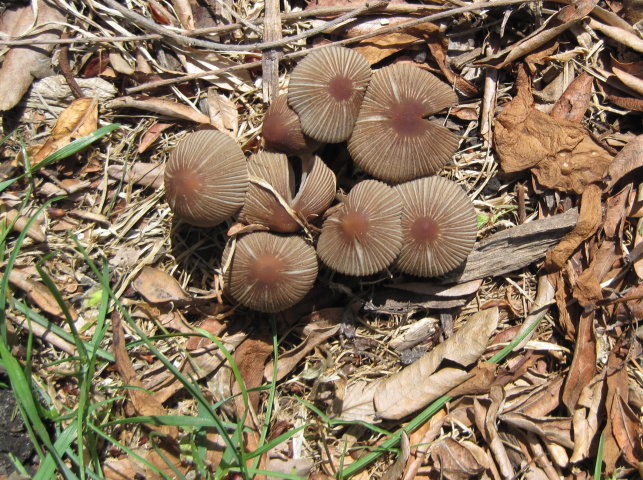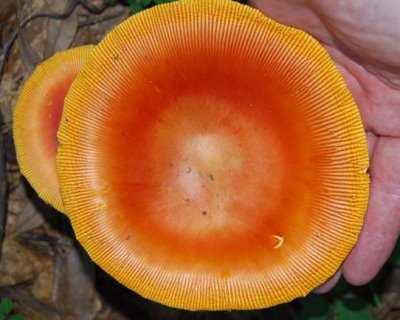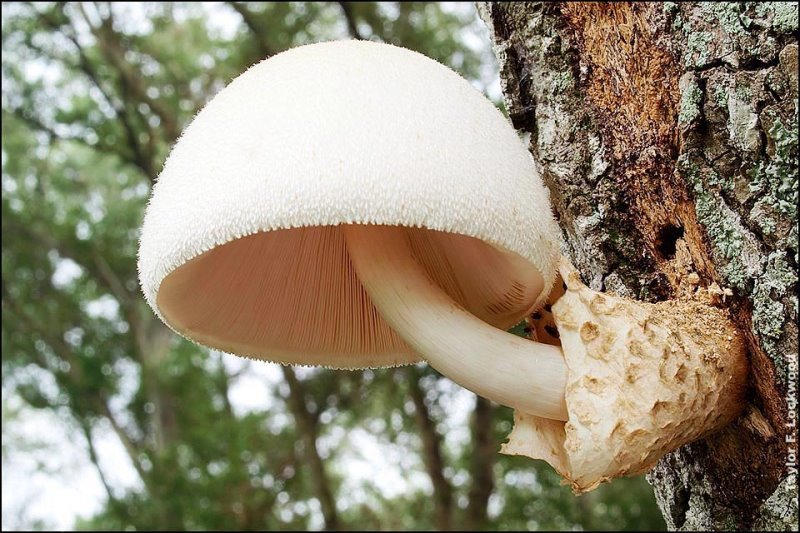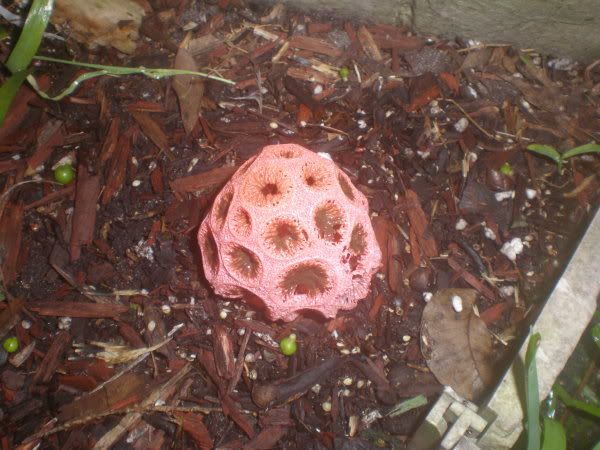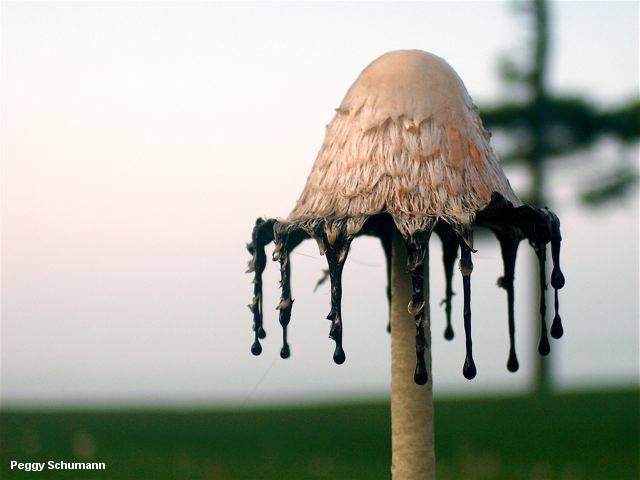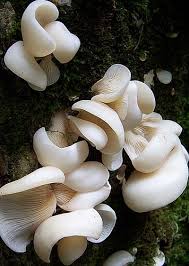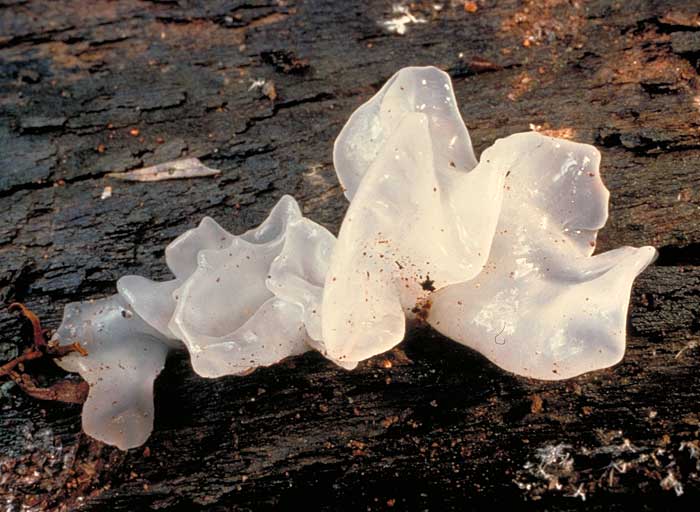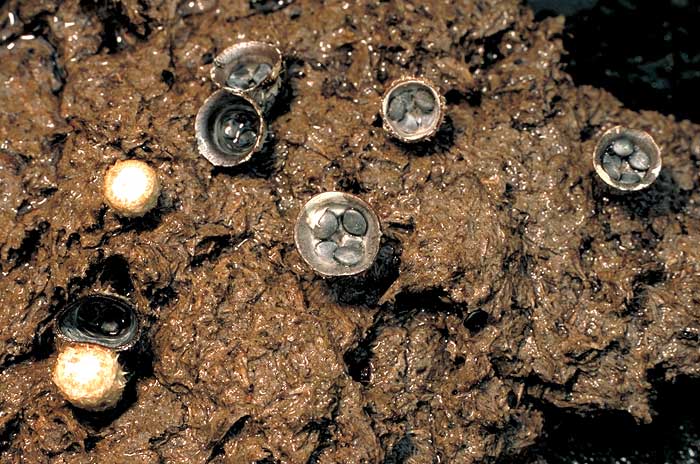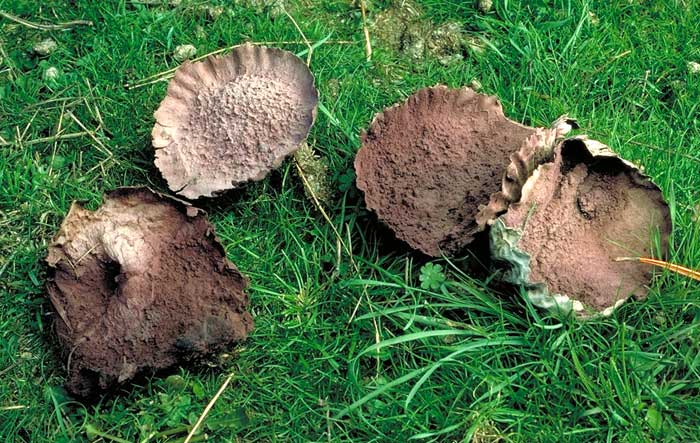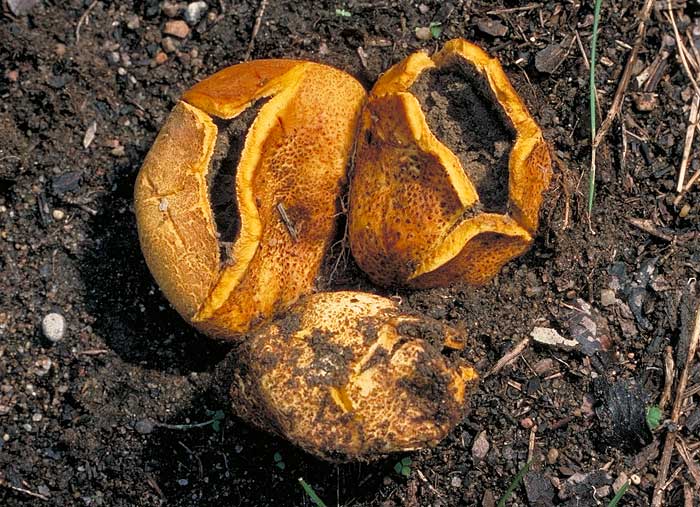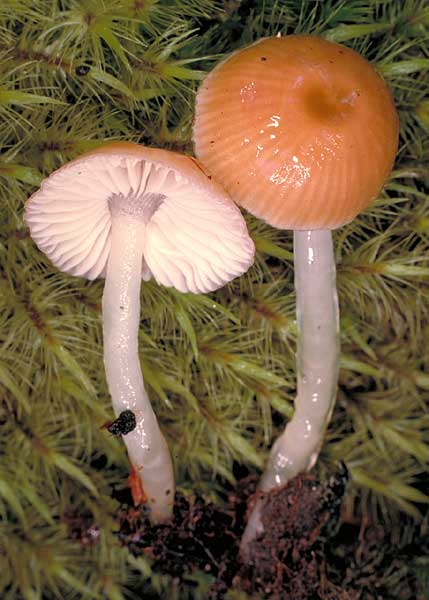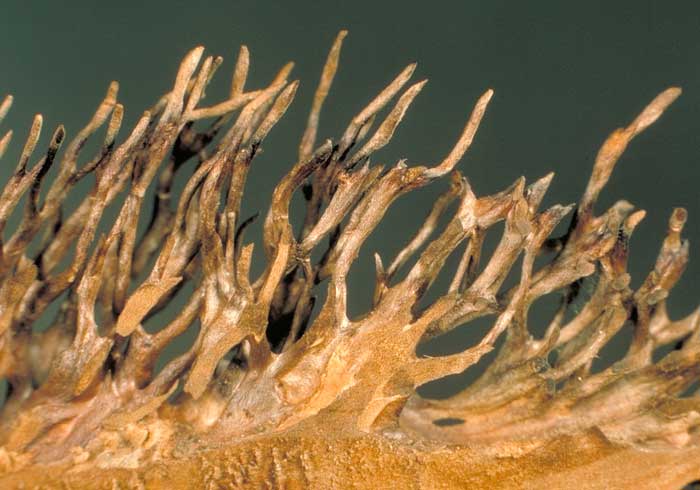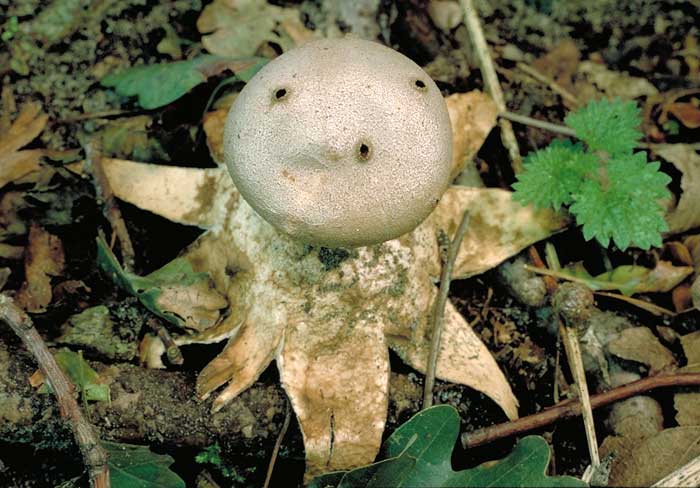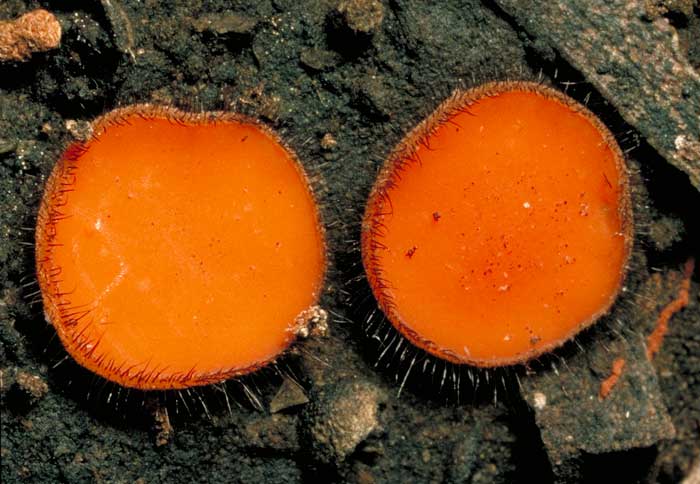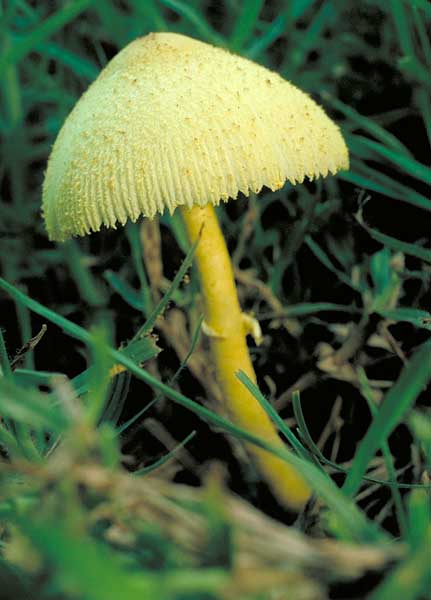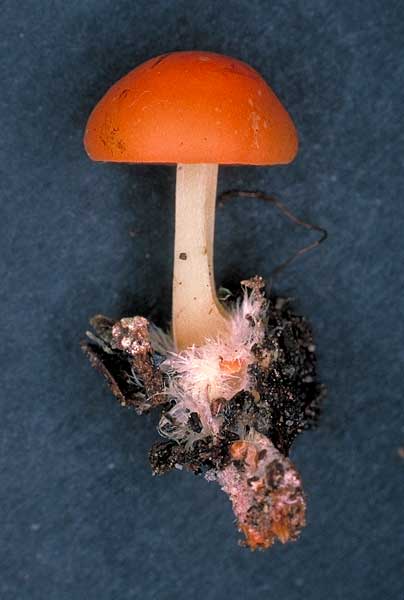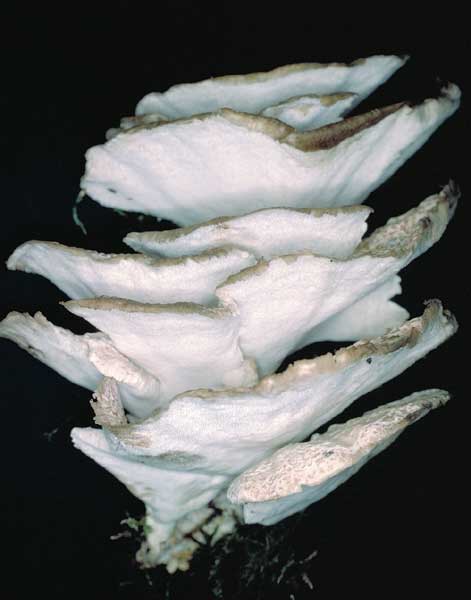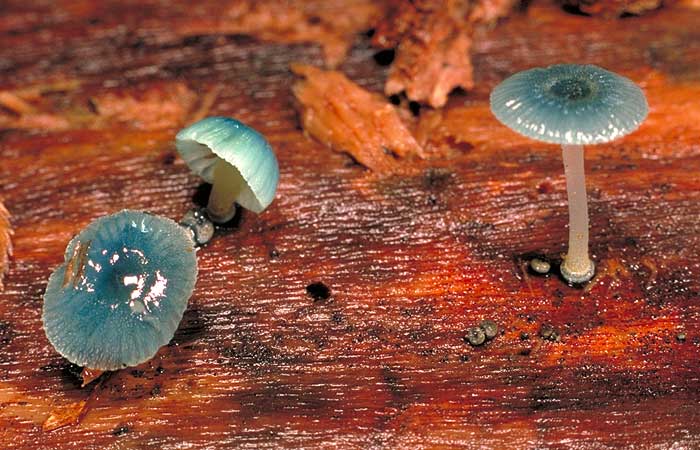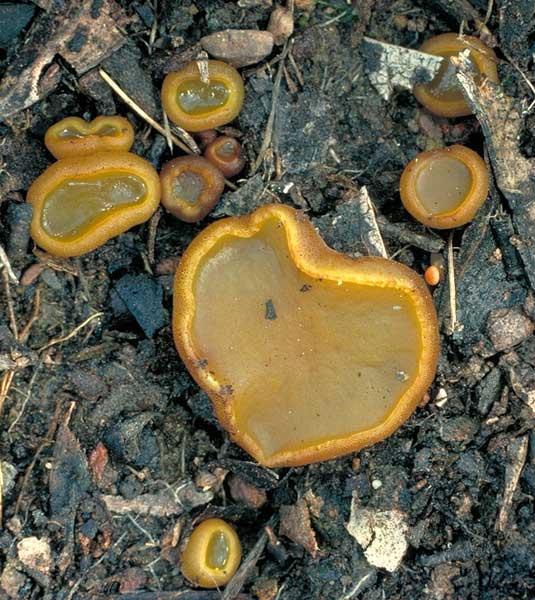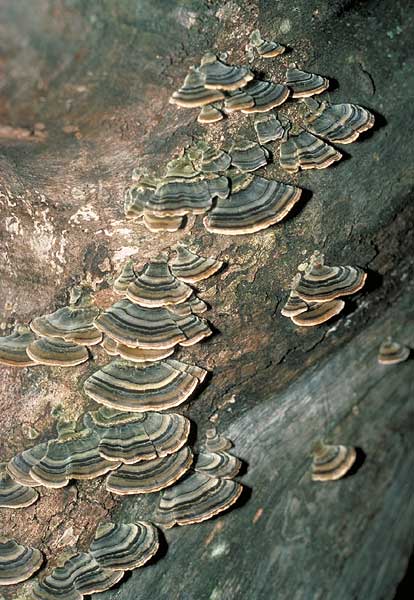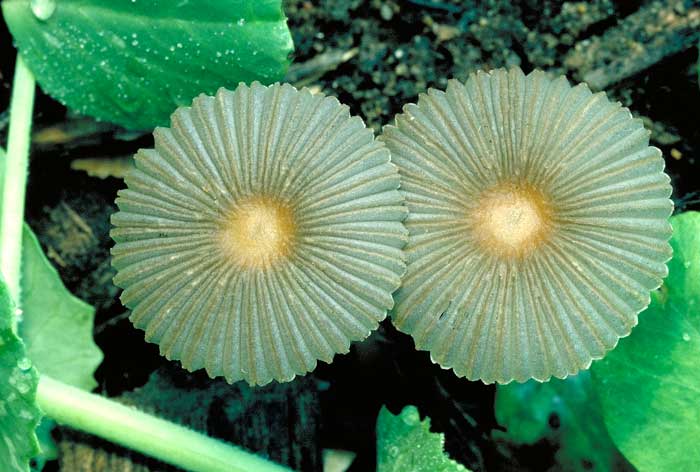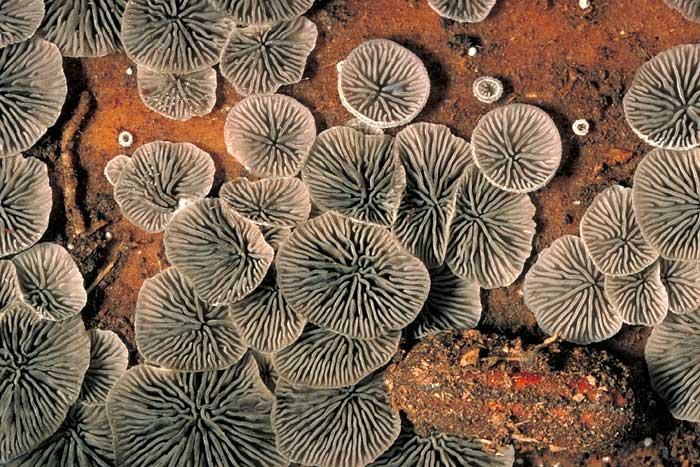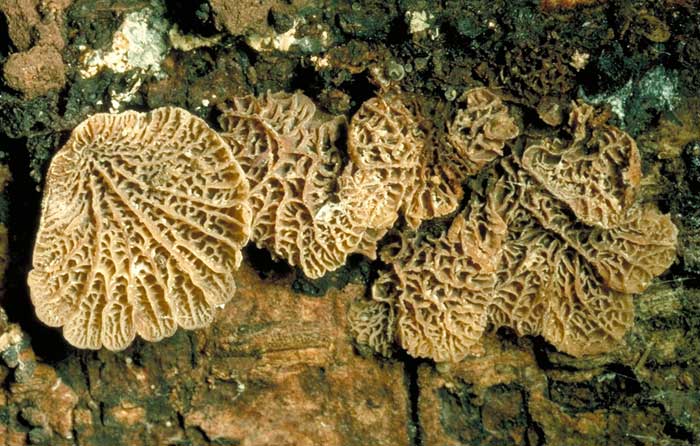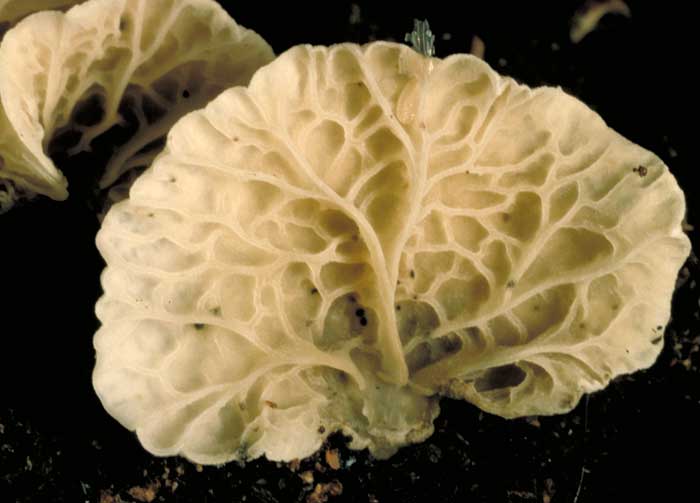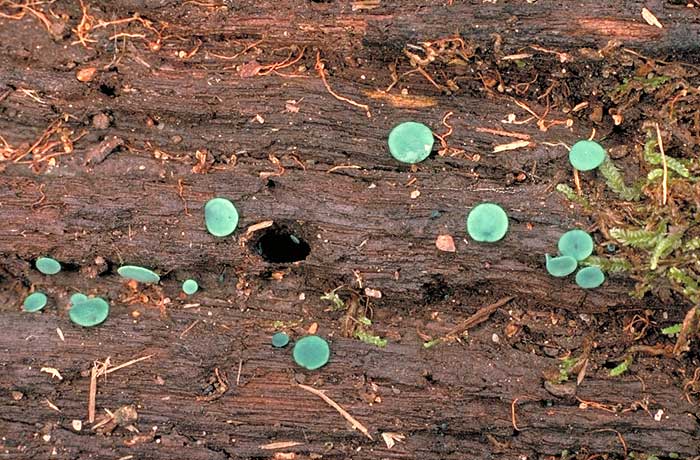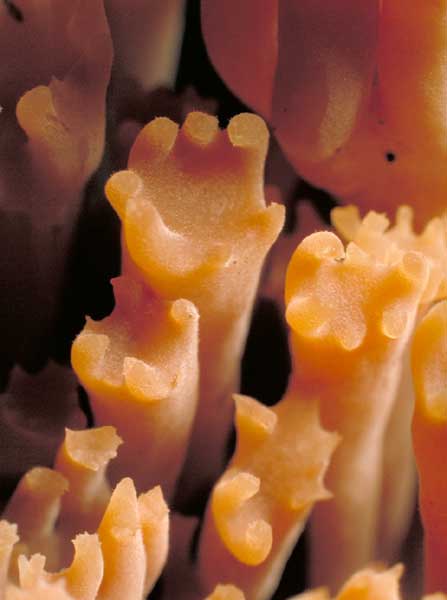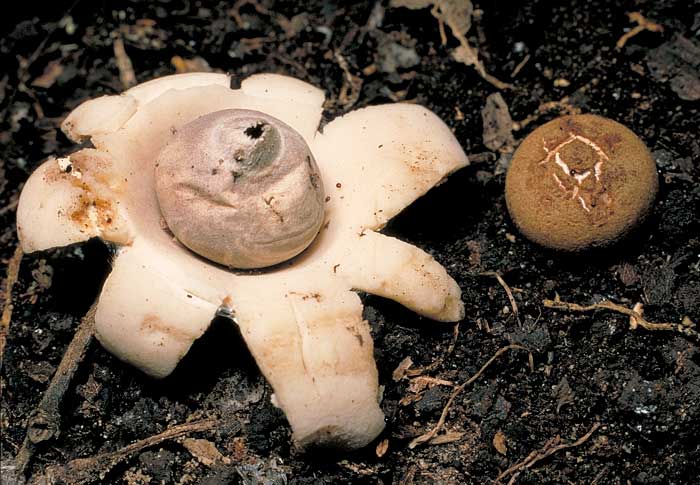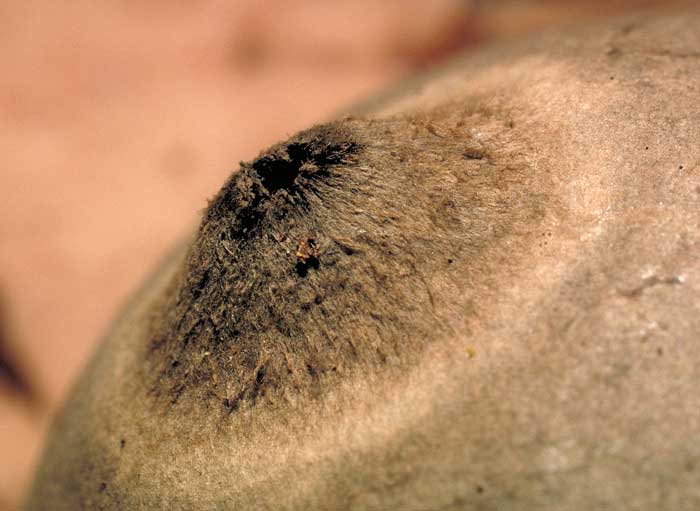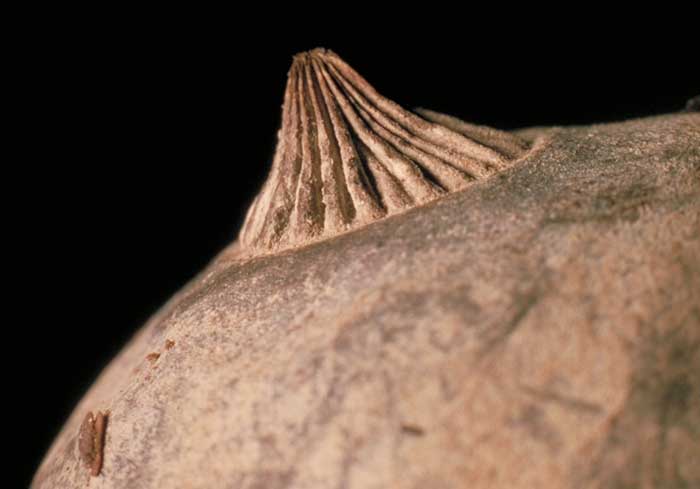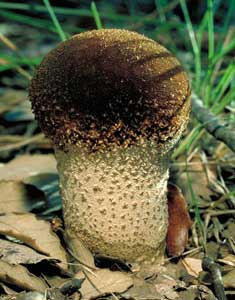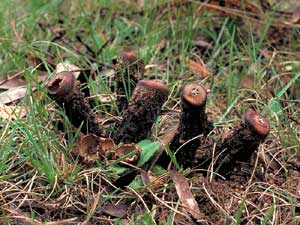
Mushrooms are as mysteriously unique as they are delicious. While often thought of as a vegetable and prepared like one, mushrooms are actually fungi, a special type of living organism that has no roots, leaves, flowers or seeds. While they can be cultivated, they easily grow wild in many regions of the world. Reference: http://www.whfoods.com/genpage.php?tname=foodspice&dbid=97#descr
Thursday, October 21, 2010
"Whiffle Ball Stinkhorn"
Stinkhorns love wood chip mulch. Most people want to know how to kill them, but I don't understand why (well, they DO STINK!). I think they are kinda cute! They are not harmful. They are saprophytes that break down organic matter, including wood chips. They have a mutualistic relationship with flies, which help spread the spores to your neighbor's garden.
The shaggy mane mushroom, also known as the "lawyer's wig."
Coprinus comatus, the shaggy mane mushroom, also known as the "lawyer's wig." It is a delicious edible mushroom
Inky caps are fascinating mushrooms. They are saprobes, assisting in the decomposition of wood, dung, grassy debris, forest litter, and so on. Most of the species have black spore prints and gills that liquefy, at least partially, as the mushroom matures. The resulting "ink" provides the common name for the inky caps, and can actually be used as writing ink.
Wednesday, October 20, 2010
Amanita muscaria (fly agaric)
One of the most iconic and distinctive of British fungi, fly agaric, with its red cap and white spots, is renowned for its toxicity and hallucinogenic properties.Species Information
- Scientific Name: Amanita muscaria (L.) Lam.
- Common name(s): fly agaric, fly mushroom
- Synonym(s): Agaricus imperialis, Agaricus nobilis, Amanitaria muscaria
- Conservation Status: Not considered to be of conservation concern. Widespread, and frequent to common throughout its range.
- Habitat: In woodland, or beside isolated trees. Ectomycorrhizal (forming a relationship with tree roots) especially with species of Betula (birch) and Pinus (pine), and occasionally with other tree species.
- Key Uses: Religious and recreational uses related to its hallucinogenic properties. Insect pest control. Medicinal uses. Forms a food source for some fly larvae.
- Known hazards: Contains small amounts of the toxin muscarine, which causes sweat-inducing poisoning. Also contains the alkaloids muscimol, ibotenic acid and muscazone, causing psychotropic poisoning, which may be severe in some cases, although deaths are very rare.
Resupinatus sp.
The photos show species of Crepidotus and Resupinatus . Both grow on dead wood and neither has a stem. In the former the cap is attached at it’s edge and in the latter the cap is attached by its top. The fruiting bodies of Campanella, like those of Resupinatus, are stem-less mushrooms that typically grow on the underside of dead wood lying on the ground. however, while Resupinatus has fairly standard gills, radiating from the point where the cap is attached tot he wood, Campanella is different. Here are two specimens, one brown and the other white , both collected on Norfolk Island. While each has a few radial gills, there are also numerous cross-connections between the gills.
Tuesday, October 19, 2010
Coral fungi show different types of branching. Some branch in much the same way as trees, with a main trunk dividing smoothly into two or more, those later dividing smoothly again and so on. A more dramatic type of branching is what’s called pyxidate branching. Here, one level finishes in a disk-like to cup-like area and the branches for the next level start at the margins of the disk or cup. The diagram shows this in stylized form and the photo shows a close-up view of a species of Clavicorona where you can see some very young branches developing around the rim of one of these disk-like areas.
Geastrum sp. ostiole
An Earthstar (the genus Geastrum ) looks like a puffball on a star-like base. The spore sack may sit directly on the star-like base or be raised on a short stalk. The apical opening through which the spores are released may be a fairly simple affair or more complex, such as the conical, pleated structure on Geastrum pectinatum .
Sunday, September 5, 2010
Subscribe to:
Comments (Atom)
